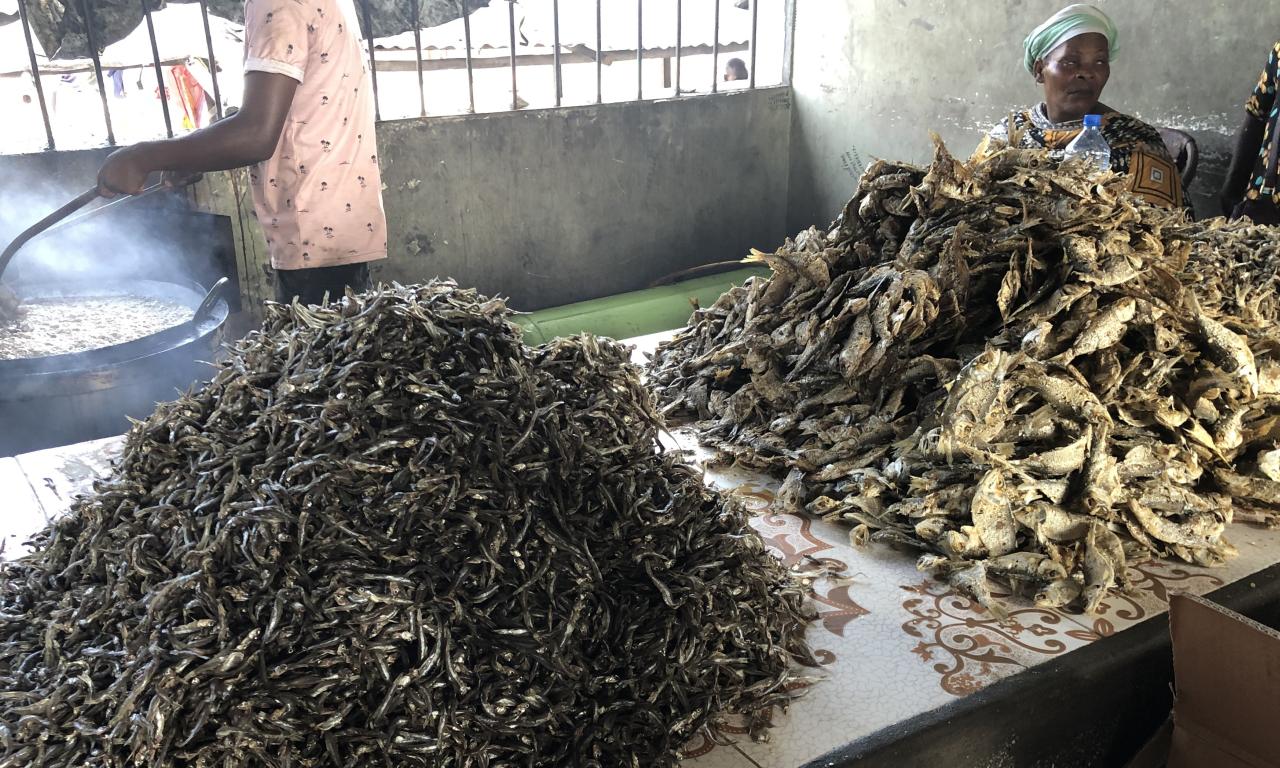
Fish loss and waste is a severe global problem undermining food and nutrition access and wasting precious natural resources, particularly in low-income countries. The common approach to addressing fish loss and waste has been to make available technology, such as solar tents and raised racks for drying and improving landing facilities. However, the problem has persisted as it has in Tanzania.
After years of struggling to mitigate fish losses, Tanzania is paving the way for a different approach of dealing with the problem.
Tanzania’s Fishing Industry
Every day, some 200,000 fishers set out to find their catch in Tanzania, off the coast of Indian Ocean and in the freshwaters of some of the biggest lakes in Africa that Tanzania shares with neighbouring countries – Lake Victoria, Lake Tanganyika and Lake Nyasa – and smaller water bodies, rivers and dams. An additional 4 million people work in related activities such as processing, trading, fish transporting, net making, and boat building.
A crucial source of livelihoods in Tanzania, small-scale fisheries also provide an affordable source of nutrition – they nourish 72 percent of the Tanzanian population.
In spite of the large role fisheries sector play in the country, Tanzania’s woes with fish loss and waste have persisted. Fish loss and waste, estimated to be as high as 40%, occurs both in quality and quality across the whole value chain, from bycatch that’s thrown away to inadequate handling, processing and storage facilities, to market forces that compel fishers to undersell. This wide-spread loss translates to lost nutrition and incomes for the communities and weakens a key path for Tanzania to sustainable development goals.
Mitigating Fish Loss and Waste
Tanzania is one of the first nations to have developed a National Plan of Action for the implementation of FAO’s Voluntary Guidelines for Securing Sustainable Small-Scale Fisheries in the Context of Food Security and Poverty Eradication (The SSF Guidelines), which has paved the way for the country to shift from tackling fish loss and waste from a technological-oriented approach to the application of a multi-dimension solutions strategy.
In partnership with FAO and NORAD, the Tanzanian Ministry of Livestock and Fisheries conducted a fish loss assessment focusing on ‘dagaa’ fishery – a silvery white small pelagic fish that is commercially not valuable but important sustenance for the local people. Constituting 45% of the landings in the country, these fish, comprising various sardines and anchovies, are rich in protein, omega-3 fatty acids, and essential micronutrients. Often sun-dried and sold, they make for a popular snack, serving as an affordable source of nutrition and contributing to incomes and culture of Tanzanians. However, dagaa fisheries face numerous losses.
The dagaa fish loss assessment led to the development of a Multidimensional Solutions Strategy that can address the multiplicity of factors causing fish loss and waste:
o Policy: Address trade barriers, including international markets, and fisheries management and governance
o Regulatory framework: Strengthen and enforce land and water tenure rights and regulations around the quality and food safety of dagga
o Technology: Upgrade fishing gear and handling and stowing on boats, and explore low-cost, environmentally friendly solutions for drying and packaging
o Infrastructure: Invest in improving landing sites and storage infrastructure and establish hubs for the demonstration of best practices and technologies
o Social and gender equity: Establish mechanisms, such as certification of fishers, awareness campaigns, capacity building and microcredits for equal opportunity
o Markets: Strengthen market capacities and establish secondary markets at border points for regional trading
o Knowledge and skills: Provide training and certification programs on fish handling, good manufacturing practices, processing, and entrepreneurship
The strategy guides the application of the above interventions to the cause of loss at each node in the fish supply chain.

Implementing the Strategy
An initiative under the Asia–Africa BlueTech Superhighway (AABS) has gotten underway to support the implementation of Tanzania’s ‘Multi-Dimensional Solutions Strategy for Reduction of Loss and Waste of Dagaa Fishery’ using climate-smart technologies with a focus on coastal fisheries. With 38 percent of global energy used to produce foods that are lost or wasted, the AABS initiative is looking to adapt and up-scale clean or low-carbon technologies to the context of local fishing communities, embedding them in a systems approach to ensure long-term sustainability and profitability of the dagaa fish value chains.
Key focus areas include:
- Introduction and adoption of climate-smart technologies for drying and smoking
- Capacity building and training on sustainable fishing methods, quality control, and efficient post-harvest handling techniques
- Improving market access through strategic partnerships, novel preservation methods and training on value-addition and business skills
- Policy advocacy for improved infrastructure and access to finance
- Development of standards and certification in collaboration with regulatory bodies for safety and quality and to bolster market value
- Women- and youth-targeted programs to train and increase access to income opportunities within the dagaa value chain
AABS Theory of Change workshop for reducing aquatic food loss and waste, Dar es Salaam, Tanzania.
The initiative was kickstarted with a Theory of Change workshop in Dar es Salaam, which convened diverse value chain actors to map the challenges along the value chain, identify all stakeholders, and agree on the approaches needed to ensure interventions lead to intended impact for the small-scale fishing communities.
The initiative, funded by the UK Government, is led by WorldFish and implemented in collaboration with a range of partners, including the Tanzania Fisheries Research Institute, FAO Tanzania, the University of Dar es Salaam, and local and regional NGOs and associations, such as the Environmental Management and Economic Development Organization (EMEDO), the Tanzanian Women Fish Workers Association (TAWFA), and AWFISHNET.
The knowledge and lessons from Tanzania could set an example for other countries seeking to harness the full potential of fisheries sector for sustainable development.
